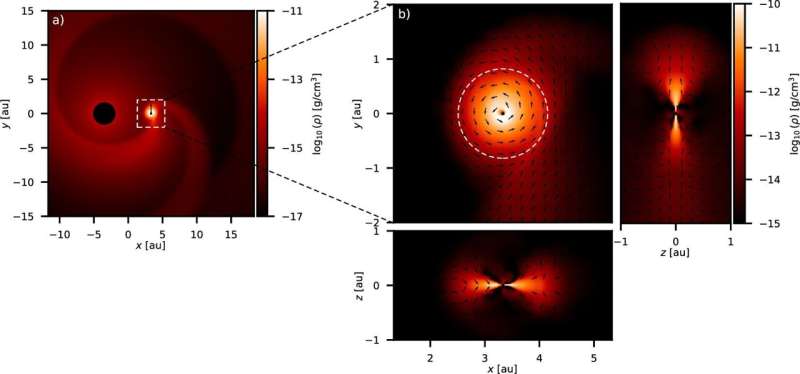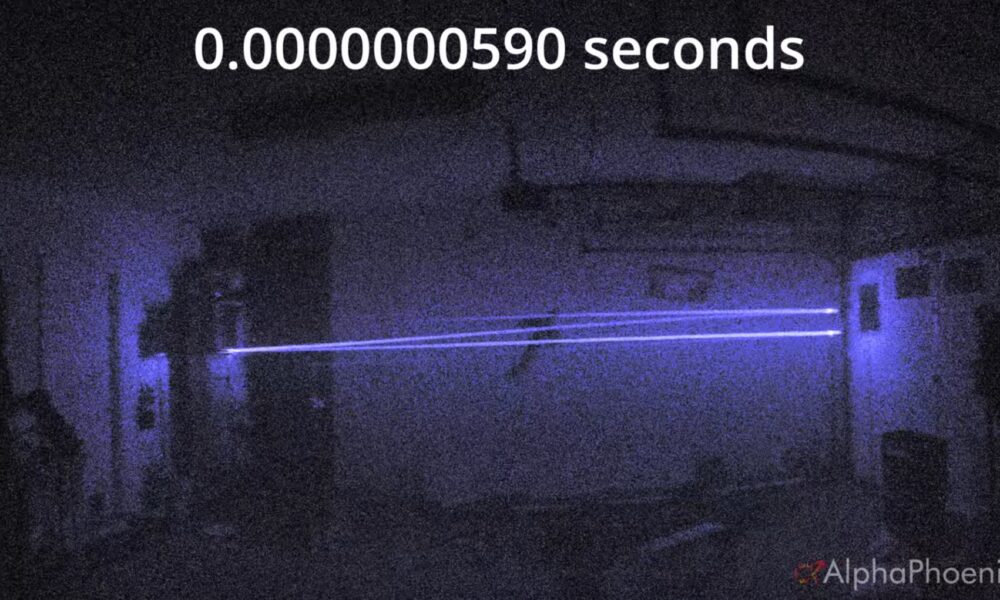An international team of scientists has successfully identified a close companion orbiting the giant red star known as π 1 Gruis. This discovery, made using the Atacama Large Millimeter/submillimeter Array (ALMA), sheds light on the complex stellar dynamics in the late stages of stellar evolution. The findings were published on November 14, 2025, in the journal Nature Astronomy.
Located approximately 530 light-years from Earth, π 1 Gruis is classified as an asymptotic giant branch (AGB) star. Once similar to our sun, it has expanded to over 400 times the size of the sun and emits thousands of times more brightness. This intensity has complicated efforts to detect any companion stars, as their light can easily be overshadowed by the red giant’s glow.
ALMA’s Role in Revealing Stellar Companions
The research team, including Yoshiya Mori, a Ph.D. candidate in astrophysics at Monash University, utilized ALMA’s advanced observational capabilities to directly show the orbit of the companion star. This large array consists of 66 radio telescopes located in the Atacama Desert of northern Chile, providing the necessary resolution to detect the companion.
Mori emphasized the importance of understanding the AGB star’s mass. “A key part of understanding the orbit of the companion is knowing the mass of the AGB star,” he stated. The team improved estimates of the star’s mass by analyzing its luminosity and pulsation characteristics, which helped refine the stellar model used in their research.
Implications for Stellar Evolution Models
The study challenges previous assumptions about the orbit of π 1 Gruis’s companion. Earlier models suggested an elliptical orbit, but the findings reveal an almost circular orbit instead. This unexpected result indicates that the orbital evolution of such companions occurs more rapidly than previously thought.
Project lead Mats Esseldeurs from KU Leuven remarked on the broader implications of this research. “Understanding how close companions behave under these conditions helps us better predict what will happen to the planets around the sun, and how the companion influences the evolution of the giant star itself,” he noted.
The analysis points to a possible underestimation of model-predicted circularization rates, suggesting that tidal interactions and binary evolution processes warrant further investigation. This new perspective could enhance our understanding of the complex relationships between stars and their companions as they approach the end of their life cycles.
The research provides valuable insights into the life stages of giant stars and their companions, potentially reshaping existing models of stellar evolution. As scientists continue to unravel the complexities of stars like π 1 Gruis, the implications for understanding the life cycles of stellar systems become increasingly significant.
For further details, refer to the study by Mats Esseldeurs et al, titled “Evidence for the Keplerian orbit of a close companion around a giant star,” published in Nature Astronomy (2025).







